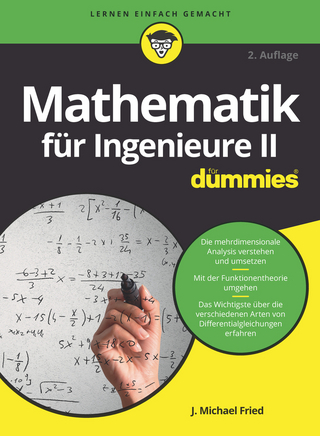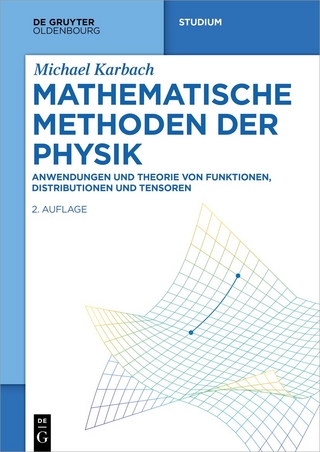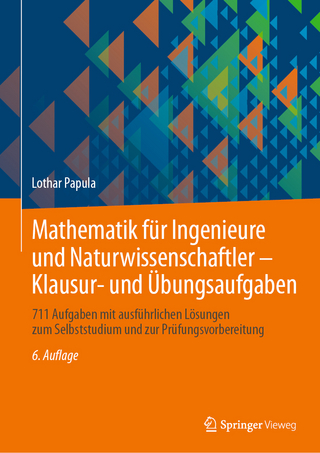
Mechanics of Flow-Induced Vibration
Springer Verlag, Singapore
978-981-19-8577-5 (ISBN)
Dr. Rajeev K. Jaiman is currently an associate professor and NSERC/Seaspan industrial chair in the Department of Mechanical Engineering at the University of British Columbia (UBC), Vancouver, Canada. An aeronautical engineer by training, his research concentrates on high-fidelity multiphysics modeling and data-driven computing, with emphasis on large-scale computations of fluid–solid and fluid–fluid interface problems. Prior to his current appointment at UBC, he was an assistant professor in the Department of Mechanical Engineering at the National University of Singapore (NUS). Before joining NUS, he was the director of Computational Fluid Dynamics (CFD) Development at Altair Engineering, Inc., Mountain View, California. The CFD technologies that Dr. Jaiman has developed are routinely used in marine/offshore, wind turbine, nuclear reactors, automotive and aerospace industries. Dr. Jaiman earned his first degree in Aerospace Engineering from the Indian Institute of Technology,Mumbai. He received his master's and doctorate degrees from the University of Illinois at Urbana-Champaign (UIUC). He has authored/co-authored more than 150 journals papers and conference proceedings and serves as an expert reviewer for numerous journals and books. He is currently an associate editor of ASME-OMAE Journal, a senior member of AIAA and member of ASME, SNAME, USACM, APS, AAM, and SIAM. Dr. Li Guojun is currently a research assistant in the Unmanned System Research Institute at the Northwestern Polytechnic University (NPU), Xi’an China. Dr. Li received his doctorate degree from the National University of Singapore (NUS). His research concentrates on high-fidelity multibody aeroelastic modeling and physical analysis of bio-inspired flexible wings. He earned his master’s and bachelor's degrees in Aerospace Engineering from the Northwestern Polytechnic University (NPU), China, focusing on mathematical modeling and physics of flutter from subsonic to supersonic conditions. He is also interested in fluid–structure–acoustic interaction problems, passive/active control strategies and optimization design based on deep learning for biological flight and civil aircraft. Amir Chizfahm is a graduate research assistant in the mechanical engineering department at the University of British Columbia (UBC). He is a UBC alumni and holds a MASc in mechanical engineering. His research concentrates on data-driven computing of fluid–structure interaction problems using physics-based high-fidelity simulations, stability analysis and active feedback control of wake flow and vortex-induced vibrations under supervision of Dr. Rajeev Jaiman. He also holds another master's degree and a bachelor's degree in mechanical engineering from Shiraz University, Iran, focusing on dynamic modeling and optimal control of wind powered bladeless turbines and energy harvesters. His areas of interest include fluid–structure interaction of marine and offshore applications, vortex-induced vibration energy harvesters, active feedback control strategies and deep learning.
Introduction.- Part 1: Generalized variational formulation.- 1. Mathematical Framework.- 2. Body-fitted Eulerian-Lagrangian methods.- 3. Non-body-fitted embedded methods.- 4. Applications and Examples.- Part 2: Model reduction and FSI control.- 1. Model reduction techniques.- 2. Passive and active control for FSI.- Blowing-suction for VIV.
| Erscheinungsdatum | 06.07.2023 |
|---|---|
| Zusatzinfo | 491 Illustrations, color; 207 Illustrations, black and white; XX, 1021 p. 698 illus., 491 illus. in color. |
| Verlagsort | Singapore |
| Sprache | englisch |
| Maße | 155 x 235 mm |
| Themenwelt | Mathematik / Informatik ► Mathematik ► Angewandte Mathematik |
| Naturwissenschaften ► Physik / Astronomie | |
| Technik ► Maschinenbau | |
| Schlagworte | Body-fitted Eulerian-Lagrangian methods • Combined-field explicit interface (CFEI) • Convection-diffusion-reaction problem • Finite Element Method (FEM) • Fluid-flexible multibody interaction • FSI modeling techniques • Fully-implicit combined field (FICF) • Large-eddy simulation for FSI • Neumann (Traction) and Dirichlet conditions • Neural calculus • Passive jet-based control • Single-phase fluid-structure • Solid-solid contact effects • Temporal coupling • Turbulence effects • Two-phase fluid-structure • Vortex-induced Vibration • Wake-structure interaction |
| ISBN-10 | 981-19-8577-4 / 9811985774 |
| ISBN-13 | 978-981-19-8577-5 / 9789811985775 |
| Zustand | Neuware |
| Haben Sie eine Frage zum Produkt? |
aus dem Bereich


